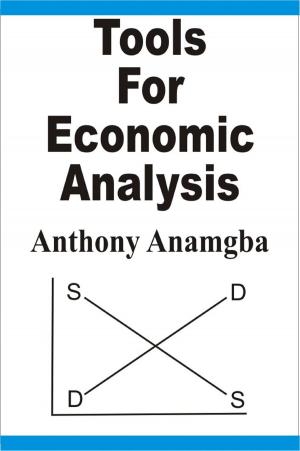| Author: | Anthony Anamgba | ISBN: | 9781386356639 |
| Publisher: | Anthony Anamgba | Publication: | March 25, 2017 |
| Imprint: | Language: | English |
| Author: | Anthony Anamgba |
| ISBN: | 9781386356639 |
| Publisher: | Anthony Anamgba |
| Publication: | March 25, 2017 |
| Imprint: | |
| Language: | English |
Concord is an agreement that exists on the correct use of subjects, verbs, genders, tenses, voice and mood in speaking and writing English.
It is in this lucid manner that this book will teach you concord.
It clearly explains the subject-verb agreement as the first rule of concord. The subject-verb agreement states that a verb must agree in number with the subject of its sentence. It throws light on the distinctive exceptions to the subject-verb agreement.
It analyzes the pronoun-antecedent agreement as the second rule of concord. The pronoun-antecedent agreement states that a pronoun must agree in number, gender and case with its antecedent.
It identifies the shift in construction as the third rule of concord. The shift in construction implies that sentences must be the same in person, in number, in tense, in voice, in mood, and between direct speech and indirect speech.
This being so, you should not shift unnecessarily between first person (I, we), second person (you), and third person (he, she, it, they), or between singular and plural.
You should not shift unnecessarily between present, present perfect, past, past perfect and future tenses, especially if the verbs in question refer to actions occurring at the same time or expressing a single idea.
You should not shift unnecessarily between the active voice and the passive voice. Sometimes, it makes sense to shift in voice, but it often confuses the readers.
You should not shift from one mood to another without a good reason. A mood is a form of verb that indicates the writer’s or speaker’s attitude towards the idea expressed by the verb.
You should not shift between a direct speech and an indirect speech. A direct speech is when the exact words of someone are quoted. An indirect speech is when the exact words of someone are reported without repeating the exact words.
And this book contains many crucial questions designed to enable you master how to apply the rules of concord to your sentences.
Concord is an agreement that exists on the correct use of subjects, verbs, genders, tenses, voice and mood in speaking and writing English.
It is in this lucid manner that this book will teach you concord.
It clearly explains the subject-verb agreement as the first rule of concord. The subject-verb agreement states that a verb must agree in number with the subject of its sentence. It throws light on the distinctive exceptions to the subject-verb agreement.
It analyzes the pronoun-antecedent agreement as the second rule of concord. The pronoun-antecedent agreement states that a pronoun must agree in number, gender and case with its antecedent.
It identifies the shift in construction as the third rule of concord. The shift in construction implies that sentences must be the same in person, in number, in tense, in voice, in mood, and between direct speech and indirect speech.
This being so, you should not shift unnecessarily between first person (I, we), second person (you), and third person (he, she, it, they), or between singular and plural.
You should not shift unnecessarily between present, present perfect, past, past perfect and future tenses, especially if the verbs in question refer to actions occurring at the same time or expressing a single idea.
You should not shift unnecessarily between the active voice and the passive voice. Sometimes, it makes sense to shift in voice, but it often confuses the readers.
You should not shift from one mood to another without a good reason. A mood is a form of verb that indicates the writer’s or speaker’s attitude towards the idea expressed by the verb.
You should not shift between a direct speech and an indirect speech. A direct speech is when the exact words of someone are quoted. An indirect speech is when the exact words of someone are reported without repeating the exact words.
And this book contains many crucial questions designed to enable you master how to apply the rules of concord to your sentences.















